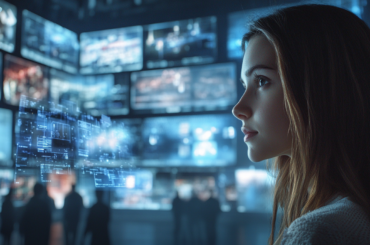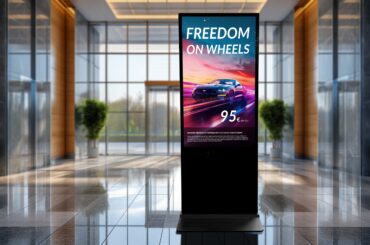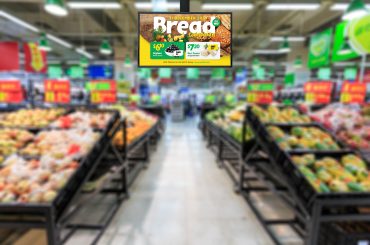Over the last couple of years, point of sales systems have opened themselves up to Digital Signage. This trend has been coupled with the recognition by many stores that digital installations present them with a number of different possibilities.
These screens are already bridging the gap between the online world and the real world in many places. It is being more and more common to see a digital menu in a restaurant or an info screen at a train station. The possibilities keep growing over time.
The biggest advantage is that the content can be updated or changed in a few minutes with the help of the right Digital Signage components. This is especially interesting in places where content has to be switched out frequently, such as supermarkets.
Next, to simple price changes of the standard product lines, there are also frequently seasonal products for sale. This leads to content, that continuously changes.
To capture customer’s attention, you can use what is called shelf vision: screens that are installed on the edge of the shelves.
Small screens, large impact
So far Digital Signage installations have been implemented mostly through large screens or entire video walls because showing moving images on appropriately large screens tends to grab peoples’ attention.
But Digital Signage solutions don’t always have to be large to have the intended impact. If they are put in the right place, even small screens can have the right effect, since about 85% of all purchasing decisions are made right in front of the shelf.
A great example is the purchase of unplanned items. We have all done it before: You leave a store with more things than you actually wanted to buy. This is especially true when it comes to clothing or grocery purchases.
Create spontaneous incentives
Shelf vision – Digital Signage on the edge of a shelf. This innovation is successful because it is advertising at eye level. This technology creates a need for the customer, which leads to an impulse purchase.
The multimedia screens target the customers directly, which then leads them to buy something they didn’t know they wanted.
Great influence, short distance
By providing targeted product information exactly where the specific product is, purchasing barriers are lowered and the customer is ready to purchase faster than usual.
The shorter the distance between product and information, the higher the likelihood that the customer wants to buy. At the same time, the credibility of the advertisement is improved.
Because the product is right where the ad is, the customer can double check the information given on the digital screen right then and there. This creates a dynamic surface, that provides the customer with an added benefit.
Leading customers
Another added benefit is that the animated images can help the customers find products they are looking for. Shelf vision can also be used as a guidance system, that can help guide and lead customers through the store.
The longer that someone has to search for a product the more likely they are to give up and leave the store without having made a purchase. Using shelf vision to guide customers to specific products can help improve the overall shopping experience.
The customers can get additional information right by the products and don’t have to do any additional research – convenience food, convenience shopping.
The shopping experience
The shopping experience becomes more emotional when it is associated with a positive experience. The result is a strong customer retention, and in an ideal case, an increase in new customers.
The customer of today is looking for an experience. One that covers more than just the simple needs. Customers want to be surprised with something special at the POS.
By using an interactive, digital landscape in your store, you can fulfill their wish. Shelf vision also creates a modern and innovative feeling in your store. The variety that shelf vision can provide lets the customer feel like they spend less time waiting around, in the aisles or at the register.
This leaves them with a positive impression, an aspect that also transfers to the overall image of the store.
Monochrome or TFT
When it comes to the implementation, there are a variety of different ways to go about it. If you only want to display prices and static information, you can use ePaper displays.
One of the great advantages with ePaper displays are their energy efficiency. They only use power when the content displayed changes or if the screen is refreshed.
However, when it comes to moving images, the quality of ePaper displays is not as appealing. So if you want to also show commercials in color and a high resolution, you should go with a thin film transistor (TFT) based solution.
One screen or panorama
The screens can be combined to form a panorama screen or they can be used individually to show different content on each screen. To catch customers’ attention, we advise going with the panorama solution.
This way, small displays turn into large screens.





